#strigidae
Text
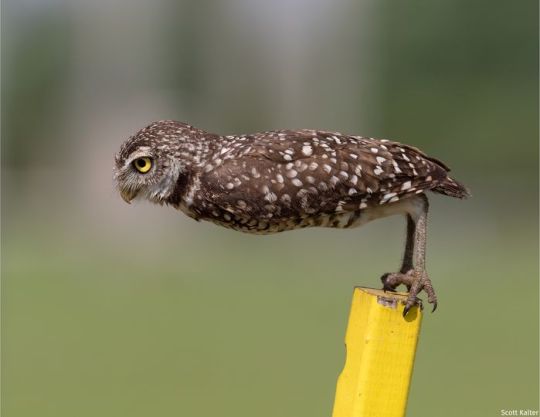
Florida Burrowing Owl (Athene cunicularia floridana) taking off, family Strigidae, order Strigiformes, southern FL, USA
photograph by Scott Kalter
13K notes
·
View notes
Text
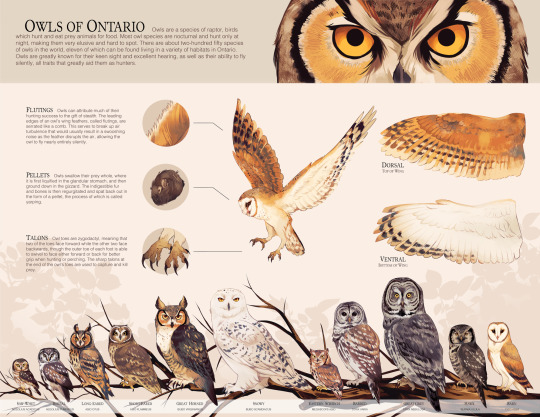
Owl infographic from last year!
#poks art#owls#birds#infographic#information illustration#pokituu#solytuu#strigiformes#strigidae#tytonidae#ontario#wildlife
1K notes
·
View notes
Photo
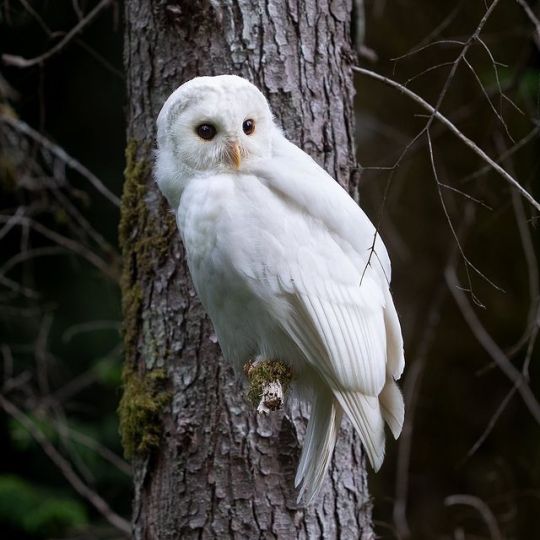
Leucistic Barred Owl
5K notes
·
View notes
Text
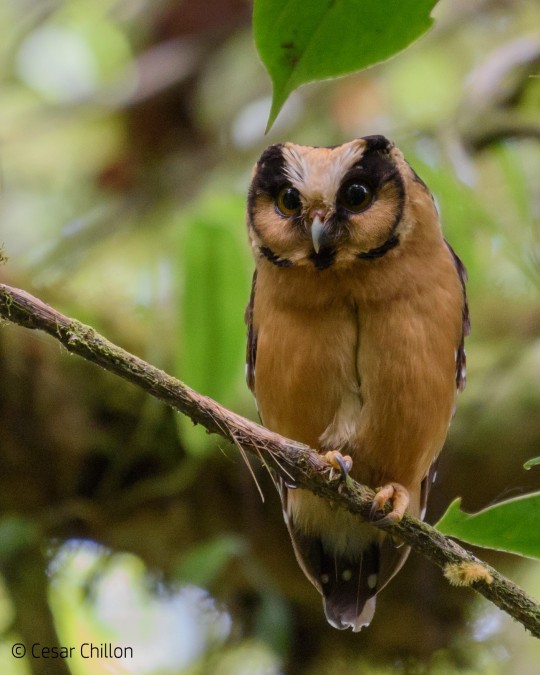
[1893/10977] Buff-fronted owl - Aegolius harrisii
Order: Strigiformes (owls)
Family: Strigidae (true owls)
Photo credit: Cesar Gustavo Chillon Solano via Macaulay Library
660 notes
·
View notes
Text

A snowy owl (Bubo scandiacus) in Ontario, Canada
by Mike Norkum
#snowy owl#owls#raptors#birds#bubo scandiacus#bubo#strigidae#strigiformes#aves#chordata#wildlife: canada#wildlife: north america
486 notes
·
View notes
Text

When owls find their way onto isolated islands lacking any terrestrial predators, they have a tendency to take up that role for themselves – evolving longer legs and shorter wings, and specializing more towards hunting on foot. From New Zealand to Hawaii to the Caribbean to the Mediterranean to Macaronesia, leggy island ground-owls have independently happened over and over again in the last few million years—
—And, unfortunately, they've all also become victims of the Holocene extinction, their fragile island ecosystems too easily disrupted by human activity and the arrival of invasive species.
The São Miguel scops owl (Otus frutuosoi) was found only in the Azores on São Miguel Island. About 18cm tall (~7"), it was slightly smaller than its relative the Eurasian scops owl, with longer legs, a wider body, and much shorter wings.
Its wing proportions indicate it would have been a poor flyer, instead primarily hunting on foot in the dense laurisilva forests. Since there were no terrestrial mammals or reptiles on São Miguel at the time, its diet probably mainly consisted of insects and other invertebrates – and it would have in turn been the potential prey of larger predatory birds like buzzards and long-eared owls.
All currently known subfossil remains of the São Miguel scops owl date only from the Holocene, between about 50 BCE and 125 CE. It's likely that it was extinct by the 1400s, following the settlement of humans in the Azores, destruction of its forest habitat, and the introduction of rodents, cats, and weasels.
———
NixIllustration.com | Tumblr | Twitter | Patreon
#science illustration#paleontology#paleoart#palaeoblr#são miguel scops owl#otus frutuosoi#strigidae#true owl#strigiformes#owl#bird#dinosaur#art#azores#convergent evolution#a superb owl
698 notes
·
View notes
Text
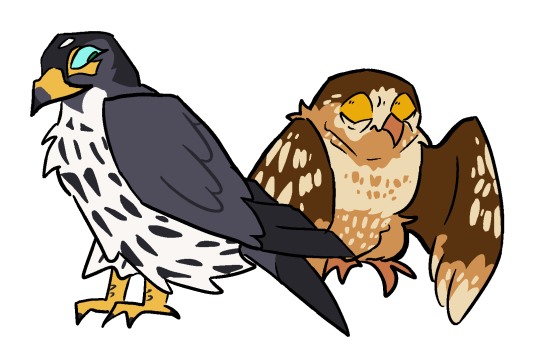
[image description: Hacksaw and Saturn from Pinepaw and the Forgotten World standing back to back. Hacksaw is a peregrine falcon with two tones of dark grey markings. her eyes are cyan with green pupils. she stares down manically at Saturn. Saturn is a burrowing owl. she is generally light brown, with a beige face and chest, as well as dark brown tones. her wings are mostly dark brown, getting lighter at the tips. she glances nervously at Hacksaw, neck scrunched. she has a loose posture with her wings partially unfolded. end ID.]
034 today's birds are lol and lmao
#you can read patfw at @barrenclan here on tumblr! its so so worth your time :3#microwsoftpaint#birds#bird art#peregrine#falcon#falconidae#burrowing owl#owl#strigidae#patfw#pinepaw and the forgotten world#barrenclan#id in caption#fanart
196 notes
·
View notes
Text
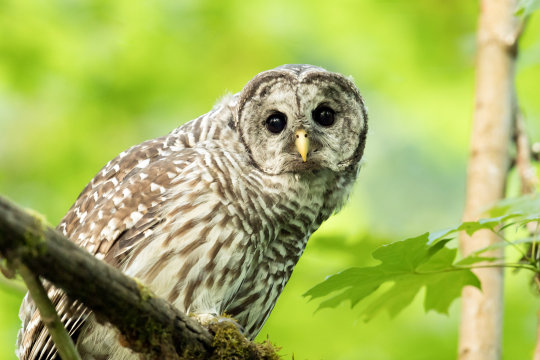
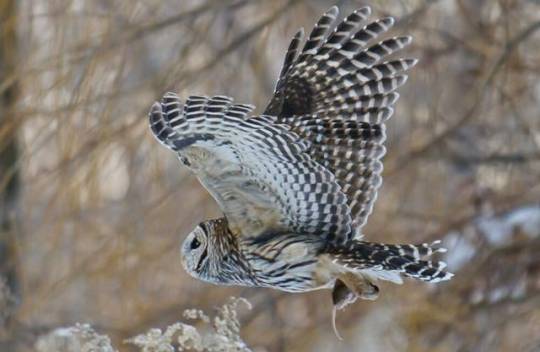

The Basics on the Barred Owl
Strix varia goes by many names: the barred owl, the northern barred owl, the striped owl, the hoot owl, the eight-hooter owl, or the who-cooks-for-you owl. The last few names refer to the owl's distinctive hooting call, which is often followed by what is often described as 'maniacal laughter'. The barred owl is native to the old-growth deciduous and coniferous forests of eastern North America, though in recent decades the species' range has expanded across the Rocky Mountains into the Pacific Northwest.
The striped owl can be hard to spot, due to its white and brown plumage. The back and wings are brown with white barring, while the chest is dull white or gray with brown streaks. The face is surrounded by a gray-white disk and framed with a brown mask. This coloration allows the barred owl to blend in seamlessly with the upper forest canopy where it resides-- although some populations in the southern parts of its range have been known to carry a pink tint due to the amount of shrimp they eat. However, S. varia is not a small birds; adults can be anywhere from 40 to 63 cm (16 to 25 in) in length, with a wingspan of 96 to 125 cm (38 to 49 in), and weigh about 630 g (22.2 oz) on average.
Like most owls, the barred owl is primarily nocturnal, though they can be fairly active during the day. When dormant, they roost in tree hollows or nests abandoned by other birds. At night, adults are active in guarding their territory and hunting for small mammals, birds, reptiles and amphibians, and large arthropods like moths and crayfish. The only natural predator of adult hoot owls is the great horned owl, which will often drive S. varia from their territory. Eggs and nestlings are sometimes prey for raccoons, weasels, and diurnal birds of prey.
S. varia mates for life, and couples are fiercely defensive of their territories and nests. Courtship and territory establishment begins in late winter, and continues from February to April. Males attract mates with their distinctive who-cooks-for-you call, and further entices prospective females with head bobbing and bowing. Together, the pair then establishes a roost and the female lays up to 5 eggs. She alone incubates the clutch for about a month, while the male hunts for her. After hatching, the female continues to care closely for the chicks for another 2-3 weeks, at which time she joins the male in hunting.
Hatchlings quickly become active, and are prone to falling out of the tree, but even at only 4 weeks old they are able to climb back up the trunk. Siblings have been recorded as being tight-knit, often staying close together in the nest and when learning to fly. Fledging begins at about 6 weeks old, and by 10 weeks young are capable of short flights. However, parents continue to provide care to their chicks until they're 6 months old, at which time the young owls leave (or are forced to leave) and establish their own territories. Mortality in barred owls is highest in their first year of life, and once out of this perilous stage individuals may live to be up to 18 years old in the wild.
Conservation status: The barred owl is a common species, and is considered by the IUCN to be Least Concern. The expansion of its range into the Pacific Northwest is considered one of the major causes of the decline of the northern spotted owl.
If you like what I do, consider leaving a tip or buying me a ko-fi!
Photos
Mick Thompson
Hal Thrachtenberg
Mark Musselman
#barred owl#Strigiformes#Strigidae#earless owls#true owls#owls#birds#deciduous forest birds#evergreen forest birds#north america#eastern north america#biology#zoology#ecology#animal facts
151 notes
·
View notes
Photo

Little Owl (Athene noctua)
© Sonia Johnson
442 notes
·
View notes
Text

Great horned owl (Bubo virginianus)
Photo by Dan Weisz
#great horned owl#bubo virginianus#bubo#striginae#strigidae#strigiformes#neognathae#aves#archosauria#reptilia#tetrapoda#vertebrata#chordata
627 notes
·
View notes
Photo

Cape Eagle-Owl
Bubo capensis
Mkhomazi Wilderness area, South Africa
-29.61, 29.363
by decklan
#one day...one day!!#owls#owl#order strigiformes#strigiformes#eagle owl#strigidae#family strigidae#south africa#bird#birds#south african birds#ornithology#drakensberg#mkhomazi wilderness area#m
101 notes
·
View notes
Text
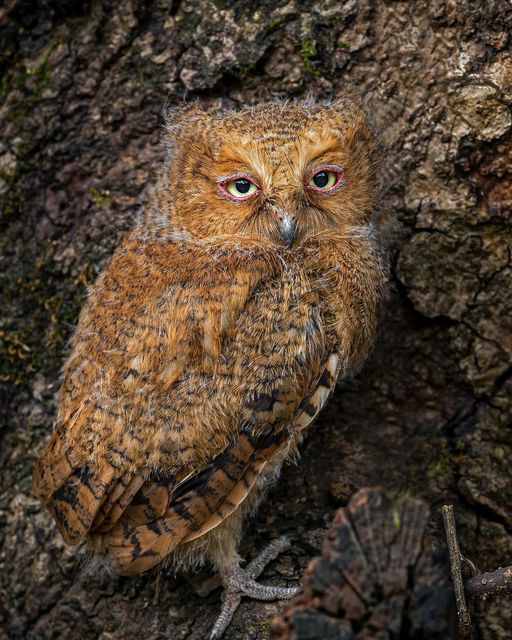
Mountain Scops Owl (Otus spilocephalus), juvenile, family Strigidae, order Strigiformes, Sattal, India
photographs by Khushboo and Rahul Sharma
7K notes
·
View notes
Photo

Australian Boobook (Ninox boobook)
© Brett Mezen
372 notes
·
View notes
Photo

Northern Harrier & Snowy Owl
#northern harrier#harrier#Circus hudsonius#Accipitriformes#Accipitridae#Circus#Bubo scandiacus#Strigiformes#Strigidae#Bubo#bird#upl
475 notes
·
View notes
Text
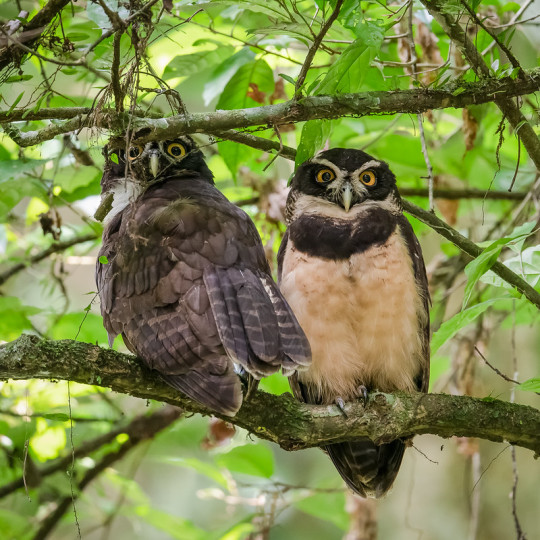
A pair of spectacled owls (Pulsatrix perspicillata) sit in a tree in Costa Rica
by Daniel Parent
#spectacled owl#owls#raptors#birds#pulsatrix perspicillata#pulsatrix#strigidae#strigiformes#aves#chordata#wildlife: costa rica#wildlife: central america
744 notes
·
View notes
Text
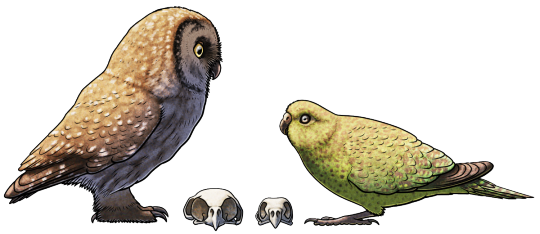
Strange Symmetries #23: Convergent Earvolution
Although it's not visible externally, owls have one of the most striking modern examples of asymmetry. The ears of many species are uneven, with the right ear opening positioned higher up than the left, giving them the ability to pinpoint the sounds of their prey much more accurately.
But surprisingly this isn't a unique anatomical trait that only ever evolved once in their common ancestor.
Instead, multiple different lineages of owls have actually convergently evolved wonky ears somewhere between four and seven separate times.
The boreal owl (Aegolius funereus), also known as Tengmalm's owl, is a small 25cm long (~10") true owl found across much of the northern parts of both Eurasia and North America. While most other owls' asymmetrical ear openings are formed just by soft tissue, the boreal owl's lopsided ears are actually visible in the bones of its skull.
But despite how many times owls have convergently evolved asymmetrical ears, and how successful this adaptation has been for them, for a long time it seemed to be something that no other animals have ever mimicked.
In the early 2000s asymmetric ears were reported in the skulls of some troodontid dinosaurs, which seem to have been nocturnal hearing-based hunters similar to owls, but proper details on this feature still haven't been formally published.
Then, just a couple of weeks ago, another example was finally announced.
The night parrot (Pezoporus occidentalis) is a small ground-dwelling parrot found in Australia, close to the same size as the boreal owl at around 22cm long (~9"). Critically endangered and very elusive, it's rarely seen and little is known about it – and it was presumed extinct for much of the 20th century, until more recent sightings of living individuals confirmed that the species is still hanging on.
Recent studies of preserved museum specimens have revealed that it seems to have poor night vision but excellent hearing, and that its right ear opening is noticeably asymmetrical, bulging out sideways from its skull. Much like owls the night parrot relies on acute directional hearing to navigate in darkness, but since its diet consists mainly of seeds it's probably not using this ability to locate food sources. Instead it may be listening out to keep track of the precise locations of other parrots, and for the approach of predators – so its sharp sense of hearing may be the reason this unique bird has so far just barely managed to survive the presence of invasive cats and foxes.
———
NixIllustration.com | Tumblr | Twitter | Patreon
#science illustration#not paleoart#boreal owl#tengmalm's owl#aegolius funereus#strigidae#strigiformes#owl#night parrot#pezoporus occidentalis#psittaculidae#psittaciformes#parrot#dinosaur#bird#modern dinosaurs#art#a superb owl#endangered species#convergent evolution#still seems to be an adaptation unique to birds and stem-birds tho
1K notes
·
View notes